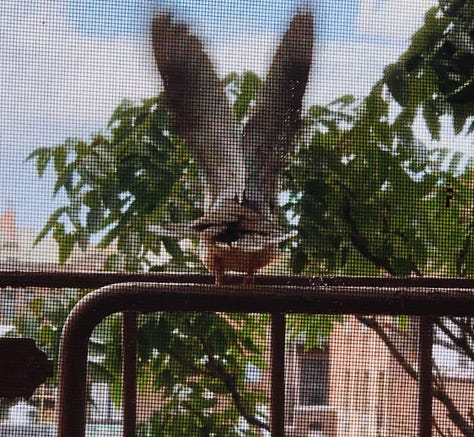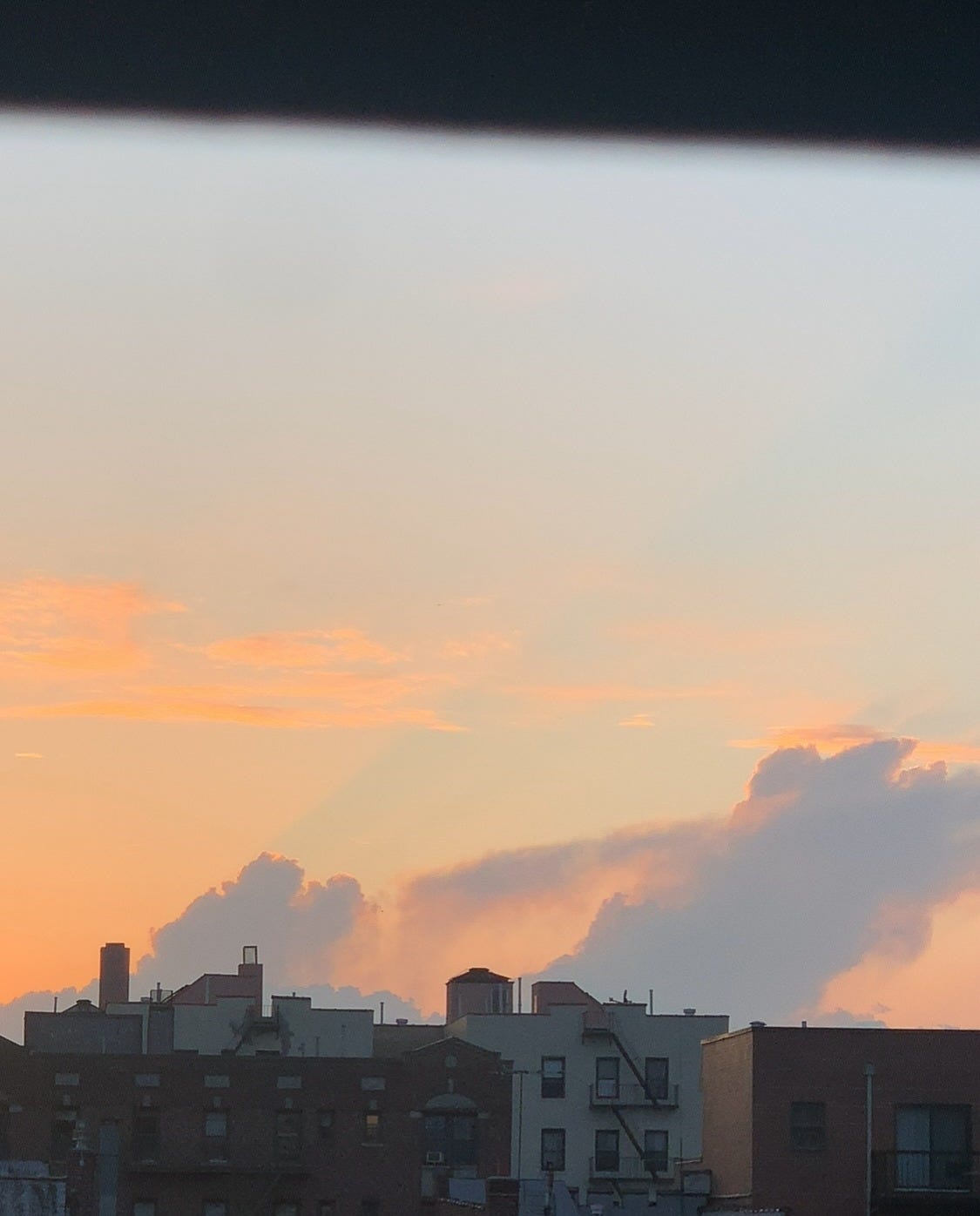February, like a breath, rises and leaves. This means March workshops are ready; if you’re in NYC, sign up here for paper marbling, bookbinding, and meditative journaling experiences. To start, strengthen, or sustain a creative journaling or meditation practice, try a virtual 1:1 session. As always, listen here, and pair your creative practice with a journal from Odette Press.
In the early hours of a day a mourning dove coos at the entrance of the window. The windows, thrown open like sleeping mouths, ease the wind into the bedroom, while the rhythm of the coo is a song — half asleep, breathing. Low and slow. The breeze is warming; dove and day both speak the language of a season shifting.
In the last week I’ve noticed the dove visiting with greater frequency. It comes to sit and sing, signifying the day starting, staying for most of the morning. With the windows to consciousness open in half dreams, I hear the doves’ vocalizing and the steady stillness of their repeating calls, announcing themselves on the sound of wings. The birds fly, landing on the iron bars of the fire escape framed in the window. Whole, beautiful bird; half of a pair, its feathers fan out in iridescent purple gray, as the mauve light of the dawn greets the starting day. They have whole conversations, these doves, cooing to call in the atmosphere across apartments from where it will perch for most of the morning.
Listen further. The days are warming, and in the distance a pair of blue jays have returned, and in the wider, listening space beyond that, in the earliest morning light is the chatter of sparrows, their conversations bright and effervescent, voices fast and overlapping. Everyone has their rhythm; every morning and bird has their song.
Earliest morning hours. Up close, I hear my mind thinking: mind wakes from dream into slow, low waves, half awake on either side of attentiveness; I am half committed to dream when I first hear the dove’s song. One foot in the river of a dream, another in the waking eagerness of the world, I bask in slow wake until my thoughts tear off; they spring, and run, eager out ahead of me. I take the bait; I chase after. Meanwhile, doves’ song is obscured for a minute as the train wakes, interrupted by the metallic growing, passing.
Forgetting and remembering; lifting, placing, replacing. This is the practice. And that morning I’d woken with a wild mind — the kind that takes off running, sprinting, firing off the sparks of synapse, the joining of connections. I love this mind; it’s a mind eager to learn and wonder, she wants to run and roam and spark and talk, a mind I learn to love more deeply the more I continue this practice; meanwhile, heart and body say sleep.
Bodhicitta. The word I repeat to myself in the gentle tendrils of the morning light. The practice is a balm I come back to, one of breath, of rhythm, of wakefulness. I return to body and mind in the early hours of breathing. Train interrupts bird call, and dove call reminds me of the world outside of the window of whirring thought and half asleep mind.
I needed to remember in that moment that I could choose the thoughts I was thinking — that I could return myself, or unhook, from the spirals of thinking. That it was agency, mine, and no accident, but a choice I’d made to enter into the dimension of the phone screens and scrolling, and that just as much as I’d made the choice to enter into I could make the choice again to pull myself away.
This is what the practice teaches: to witness our attention. To watch what our minds are full of, and hold them in the bowl of compassion, and bring with us the ingredients of basic care and goodness, to ourselves and each other, when we notice we are carried away. Bodhi, awakening and citta, or heart-mind, combine to remind us of the path of waking up. You bring to yourself and others the qualities of equanimity, compassion, joy, love, as the onset of the practice. As Jack Kornfield writes, “the heart-mind has many dimensions,” and encompasses more than solely thinking-states, but breathes wide enough to include thoughts, feelings, sensations, intuition. The minute we realize we are carried off is precisely the minute we build that awareness: like birdsong, that attentiveness drops us down into the heart of the moment, and we bring ourselves back.



There, in the dawn hours, I take my attention back. I notice my breath as I stretch back to the eyes of half sleep. Sleep thickens; body settles. The longer I exhale, the more I settle in. In the space between wake and release, I remember the shoreline: how the water laps back and forth against the bridges, river filling the spaces between each part of this city. The practice is a harbor by which we roam, we ebb, and float, and turn ourselves over in the lull of the water. Our practices become a place to notice, to sit by the shoreline, to watch what arises.
Throughout the day as I write this, I’ve heard the doves’ song repeatedly. In the park by the East River, cooing from apartments as I stand, writing, heart pounding on a run, watching the undulations of the water. The river ripples out in gray iridescence. Back by the window, I hear the coo and the call between the now-sound of the radiator, and the restaurant nearby. Silence, noise; sleep and waking, the birds’ song is punctuated as much by rest as it is by sound. We inhale and let in breathing, then exhale, and let breath out. Waking, sleeping, the practice rises with us, and falls to sleep. Be with mind, breath, watch the waking mind, float into dream, and rise on the wing of purple gray morning.
The bird — what does she say? Her song repeats like my own thinking, feeling, breathing; meditate on sound and you will come to know the feeling of the song of the heart of living. Refuge, the place to drop into the moment, into the heart, to hold ourselves. Returning, the doves’ quiet calls reminds me to sing out, to speak the same low and slow, to drop into the heart of song, to find what bears repeating.
Nourished By, Nourishing:
Listening to Pema Chodron: “What is Bodhicitta?” and reading research on the connection between heart and mind. Cooking hot date salad, oats with apples and pistachios. March workshops are here. Listen to this February playlist
For Paid Subscribers:
Sand and Citrus, a colorway
"The thing about friction is like sand, sugar, rubbed against the dead of winter, rubbed gently against the landscape of face or lemon skin, something gets released: oils, insights, ideation. Friction takes energy, momentum, and sloughs off the excess — so something smooth, bright can come through."







